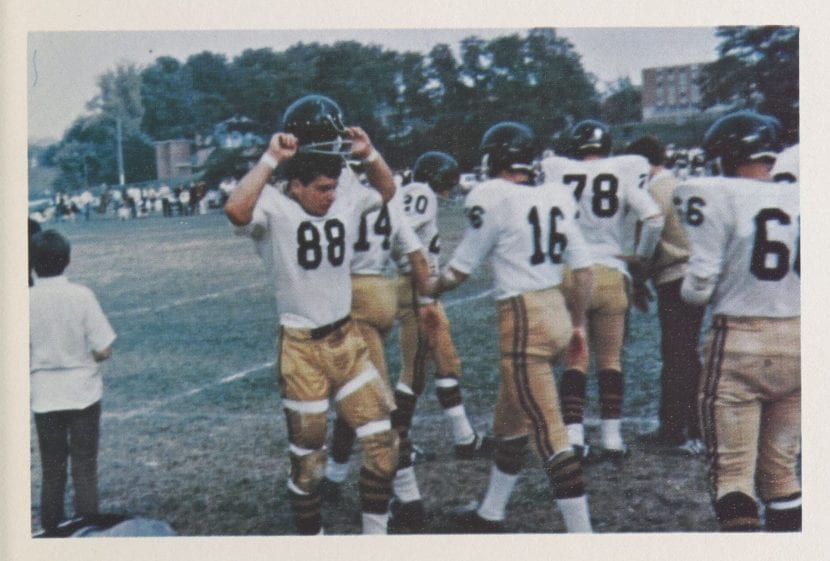In 1963, just after the State Teachers College (STC) at Towson became Towson State College (TSC), the Student Government Association (SGA) agreed to set up an ad hoc committee to investigate the possibility of creating an intercollegiate men’s football team on campus.
The timing was significant. Until Towson transitioned to a liberal arts college, the percentage of men enrolled at the school remained low and would not have been able to support what was needed to field a football team. In 1961, while there were 1,346 undergraduate women enrolled at STC, there were only 401 undergraduate men. By 1965, the number of women had more than doubled to 2,959, but male enrollment had grown to 1,779 — over four times the number that had been enrolled just four years previously.
What became of that SGA committee or if it disclosed any pertinent findings is not recorded. Flag football continued to be played as an intramural sport with little public discussion about creating an intercollegiate team.
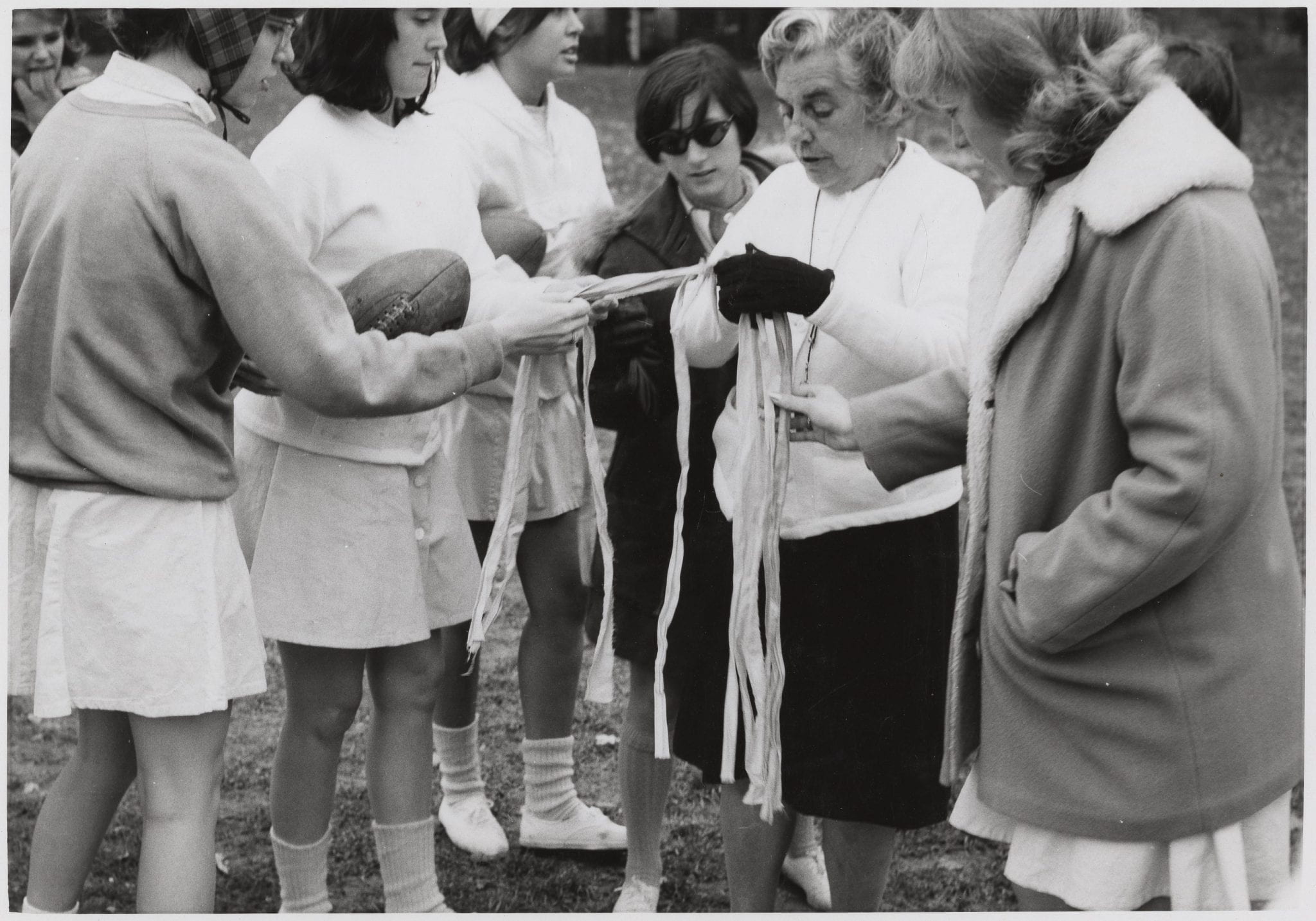
The subject was raised again in the spring of 1966 when President Hawkins asked Doc Minnegan to do a close study of the possibility of fielding a men’s team.
The Football Feasibility study was crafted by an ad hoc committee headed by Dr. Minnegan and Paul Case, the new Director of Public Relations for TSC. The first area of concern raised by that committee was the number of men on campus. Of the almost 2,000 men enrolled, just over 40 showed interest in playing the sport. But as enrollment was expected to increase, the number of men who might be interested in fielding the team was also anticipated to increase.
The study recommended that the program be developed in two stages. The first would start in the fall of 1968 and continue the following fall and would have the school playing just six games against other colleges’ freshman or junior varsity teams. By the fall of 1970, a full college varsity team would be fielded, playing against other teams in the Mason-Dixon Conference, such as Johns Hopkins and Gallaudet.
On November 13, 1966, the Senate Committee on Interscholastic Activities voted to begin a football program at TSC, “contingent upon the proper space being allocated, the necessary money being furnished and the proper supervision being obtained.”
Proper Space
In order to accommodate the expected swell of students, TSC was fast-tracking the construction of new buildings. 1968 alone saw the opening of two of those buildings, Linthicum Hall and Burdick Hall, and plans were in place to open 10 more in the next 10 years. The need for more space meant that the state would eventually buy land from Sheppard and Enoch Pratt Hospital across from campus at Osler Drive to plan construction of new sports facilities, administration offices, and student housing.
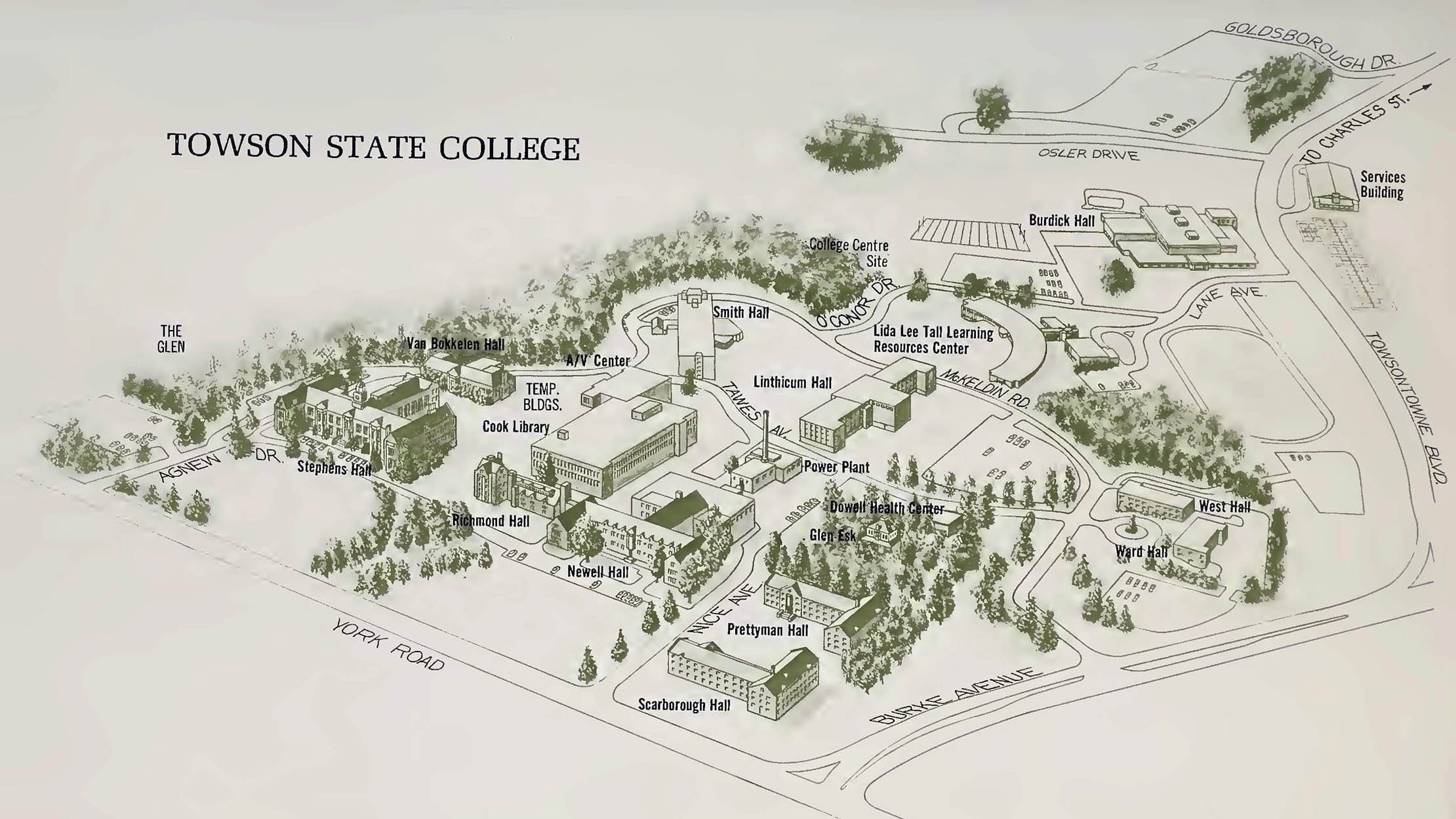
In the meantime, football was played on a field just south of Burdick Hall, near where the University Union now stands. You can see the goalposts and yard lines in the campus map above.
Necessary Money
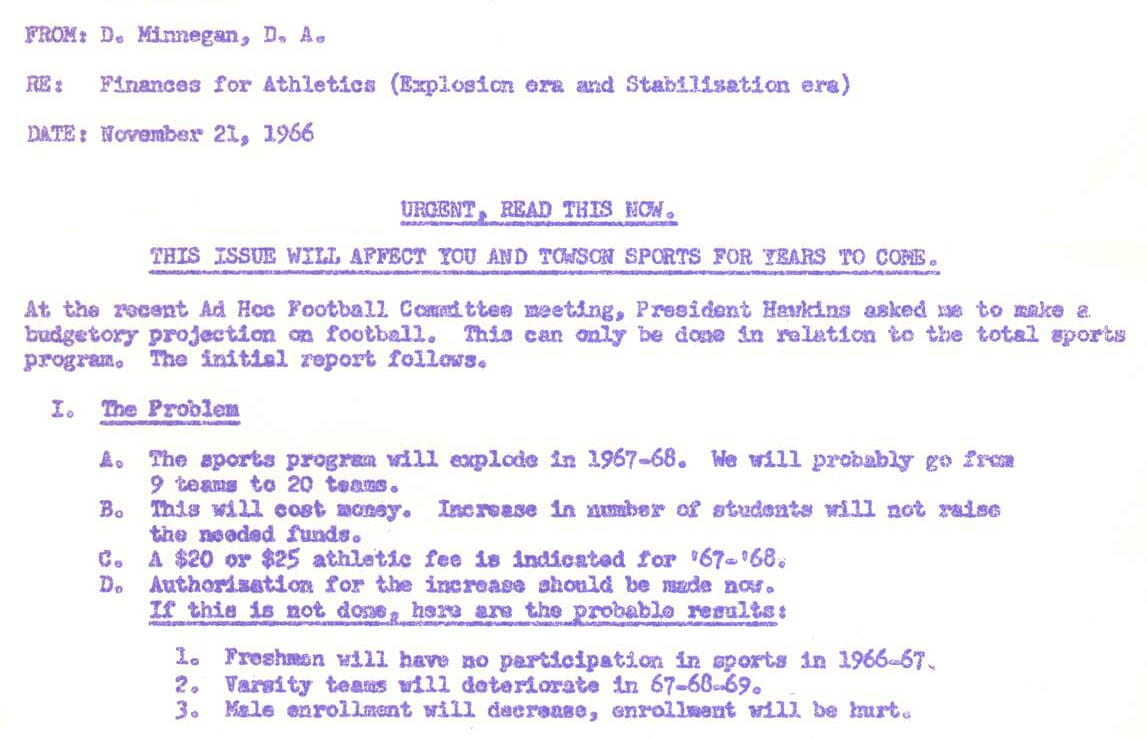
A week after the vote passed the College Senate, Doc Minnegan sent out a memorandum regarding the cost of fielding a football team. His projections suggested that while there would be an increase in students, and therefore an increase in the amount of money raised by the mandatory athletics fees each student would pay, that money would not be enough to cover the cost of the new teams.
His suggestion was that the fee be raised to $25 per student (almost $200 in today’s money), and if that did not happen, the teams would deteriorate, and student enrollment would also take a hit.
By the fall semester of 1968, all students paid a $25 athletics fee — even female students who were not allowed to participate in varsity sports. That change wouldn’t come until Title IX in 1972.
Proper Supervision
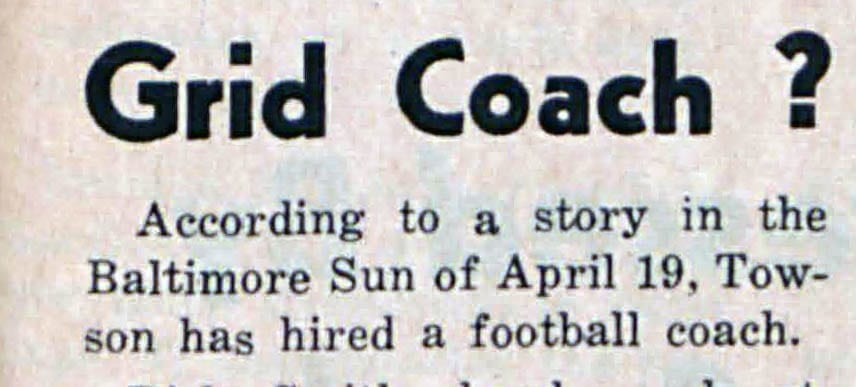
In the spring of 1967, the news of a new football coach first reached campus by way of the Baltimore Sun. Richard Smith, head coach at a college in Delaware, told the Sun that he’d been hired by the college. “According to Smith,” reported the Sun, “he will be recruiting, scheduling, purchasing equipment and organizing the program until September of 1968, when Towson will embark on a junior varsity schedule. The coach expects Towson to be playing a varsity schedule in 1969.”
Six months later, Smith reported that he was working hard to recruit new players by contacting high school coaches in the surrounding states as well as Maryland, and that he would “personally visit each Maryland high school after the Christmas holidays.” When the article was written on December 15, 1967, “over 50 boys have already replied to his attempts and expressed in interest in Towson.”
Meanwhile, the campus community was eager for the new program as evidenced by the support for Marathon Football. These weekend-long fundraising events began in 1966 and continued to grow for the next few years.
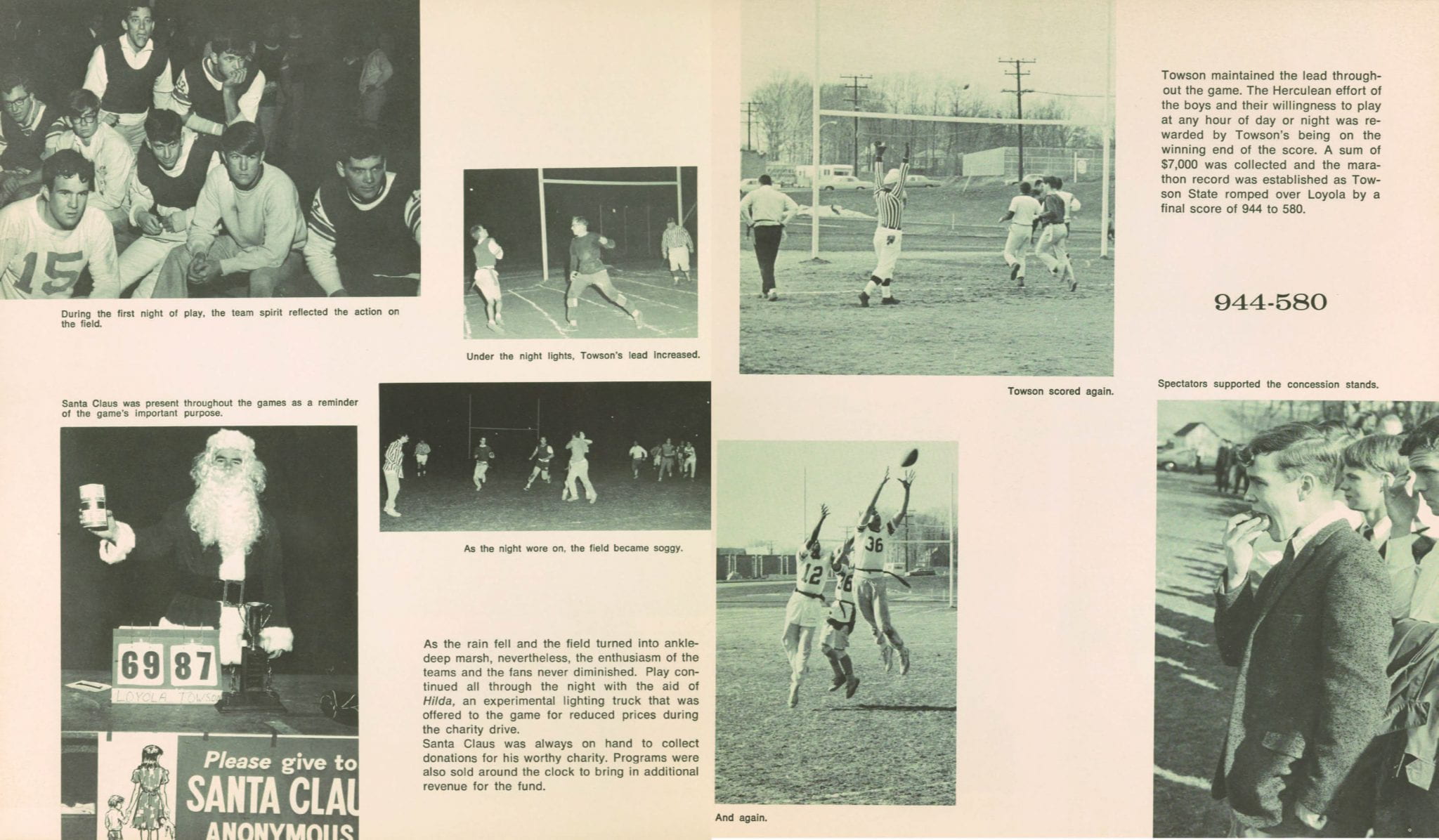
Finally, on September 20, 1968, the first junior varsity game was ready to be played against Ursinis College.
However, there had been a change in “proper supervision” that no one had anticipate. Coach Smith left campus before the very first season could start. In a last-minute change, Carl Runk, STC’s lacrosse coach, stepped in to coach the fledgling football team as well.
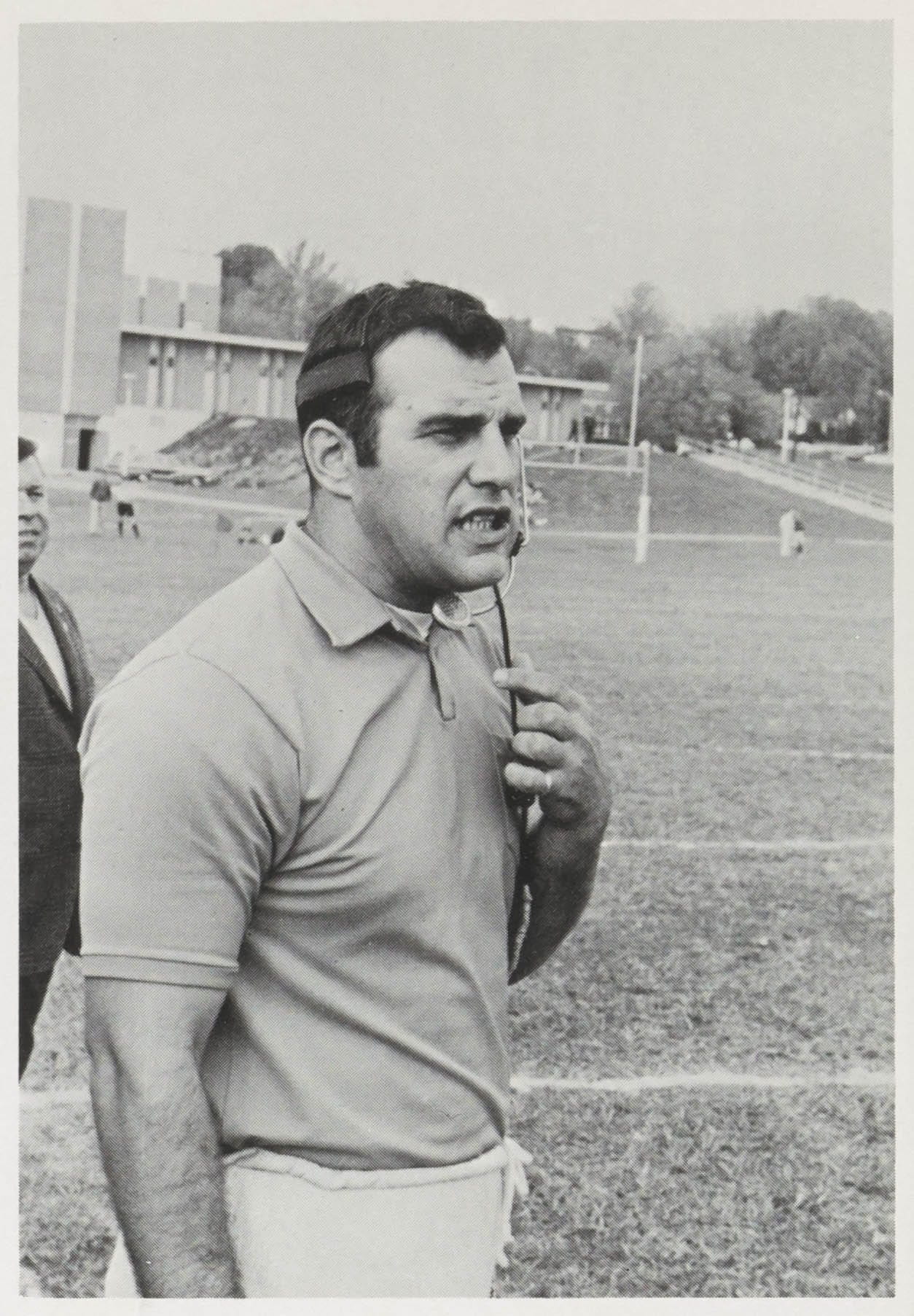
Runk would remain with the team until 1971, but he coached lacrosse from 1968-1998 and was recently inducted into the Intercollegiate Men’s Lacrosse Coaches’ Association (IMLCA) Hall of Fame.
STC lost that first game against Ursinis, 31-8, but the Towerlight was still hopeful about the team’s prospects. After all, as the newspaper reported, “Towson has only been practicing for approximately 2-3 weeks. . . . Towson scored late in the fourth quarter, on a brilliant end run that set up the touchdown. Although the score seems to indicate an upset, the Tigers did well against a seasoned veteran.”
On September 29th, Towson University will celebrate 50 years of football during a game against the Citadel.
